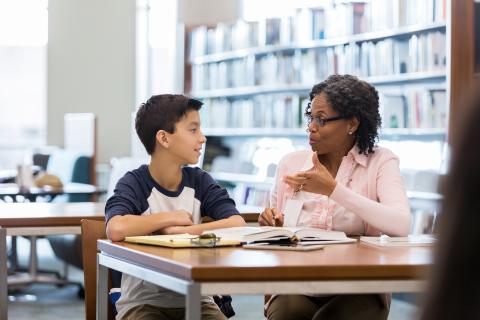Wraparound Supports: A Promising Strategy for Supporting Students Experiencing Homelessness


By Kim Anderson, Ph.D. and Paticia A. Popp, Ph.D.
School- and local educational agency (LEA)-wide initiatives to address adverse childhood experiences (ACEs) are a necessary first step in supporting all students. These efforts should be augmented with tailored supports to address the specific experiences and needs of specific groups of students, especially students experiencing homelessness.
A Promising strategy to support students experiencing homelessness
One promising strategy is the adoption of a wraparound services approach. “Wraparound services” refers to efforts by educators to bring together siloed efforts, within and external to the educational system, into a coordinated and comprehensive set of services to meet the specific needs of students.
Providing wraparound services became an allowable use of funds in the American Rescue Plan (ARP) Act of 2021, including funds reserved for homeless children and youth (ARP-HCY). ARP-HCY encourages teachers, school staff, and LEA staff (such as social workers, counselors, transportation, and nutrition programs) to collaborate with community service providers (such as medical, mental health, nutrition, housing, and social services professionals) and supportive people in the child’s life (such as parents, friends, and relatives). Together, these adults can provide students with a coordinated and holistic set of services to address their academic, social, emotional, medical, and mental health needs. McKinney-Vento local liaisons can work with educators to tailor a set of wraparound supports to meet the specific needs of students experiencing homelessness and collaborate with community partners and providers to ensure students can access the services.
LEAs across the country have been using ARP-HCY funds to hire additional staff to support local efforts to provide wraparound services for students experiencing homelessness. These staff have included school social workers, mental health and attendance specialists, counselors, and staff dedicated to connecting students to services in the community and to coordinating these efforts across providers. LEAs are now focused on sustaining these efforts into future years beyond ARP and ARP-HCY. Read more about promising efforts to provide and sustain wraparound services for students experiencing homelessness here and here.
Collaboration among educators, local liaisons, state coordinators, other colleagues, and community partners can promote two-fold benefits: It can help build the collective capacity of educators and communities to better serve the whole child needs of students experiencing homelessness. Deepening this focus on this one student population will also advance efforts to provide more effective whole child supports for all students.




